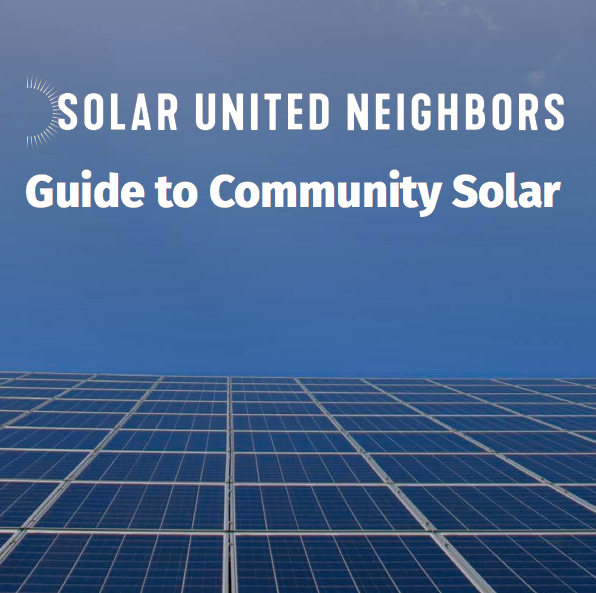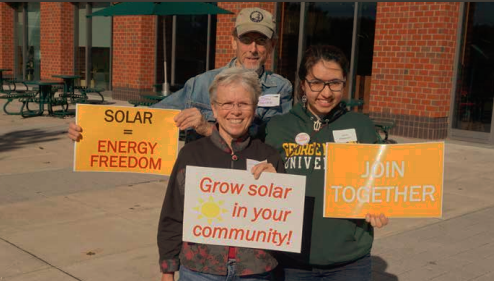By Hanna Mitchell, Program Director for Solar United Neighbors of Texas
While demand for solar is growing across Texas – and some Texas cities have recently doubled down on their investments, going solar may still feel out of reach for millions of Texans. And while the cost of solar has dropped dramatically in recent years, the typical profile of a solar owner is someone who owns their home and has upfront capital or decent credit.
For those who rent, move frequently, or own a home that is completely shaded or without contiguous roof space, community solar may be a worthwhile option to reap the benefits of local solar electricity without putting panels on your roof.
So what is community solar, anyway? Since the term is frequently misused, let’s start by clarifying what it’s not: community solar is not a “green purchase program,” which generally rely on the trade of Renewable Energy Credits and come at a premium. Community solar isn’t a bulk purchase program for homeowners.
Community solar, also known as shared solar, allows people who are enrolled in the project to get their electricity from a solar array that may be either on or offsite but is generally close to where people are using the electricity. For a deeper dive into community solar programs, check out this guide from Solar United Neighbors.
While Texas does not explicitly legislate community solar programs as you can find in sixteen other states, the complex nature of the Texas electricity market offers a patchwork of community solar options that complement rooftop solar and the potential for many more options to evolve.
Much of the community solar currently available in Texas is offered through municipal utilities and electric co-ops. Check with your local electricity provider(s) to see if community solar is currently available or will be in the future.
So to recap, community solar functions as a form of distributed generation that complements rooftop solar and is available in some parts of Texas. In practical terms, you may see several different models available that allow you to buy solar electricity from a shared array.
Under a subscription model, people may sign up to buy their electricity from the community solar array, ideally at a cost equal to or below the current rate they are paying for electricity. Under an ownership model, people or organizations may buy shares (e.g., in increments of kW) and receive a credit on their utility bill for the amount of money that their share in the project is producing. This is called virtual net metering.
Beyond local availability, there are some factors to think about when shopping for a community solar program. You may want to consider who owns and operates the project, which can determine how the benefits are shared with subscribers.
You will also want to review your monthly energy use, how much you pay for it and how much of your consumption you would like to offset, if that option exists. And finally, you will want to look over the terms of the contract so that you know the length of the agreement and payment schedule
From a policy and development standpoint and although community solar has the potential to improve equitable access to solar, not all community solar programs are created equal. Whether or not the program is a good economic option for consumers, either in terms of lower rates or recouping expenses, is one factor. The ease of subscribing and unsubscribing is another consideration.
And as with any community-sited project, it is important to build stakeholder input in project planning and decision making – especially from those that the project is designed to serve so that there are real community benefits. For more information on project siting, check out this summary of recommendations or this guide to project development from the National Renewable Energy Laboratory.
Expanding distributed generation and access to solar in Texas will take a multi-pronged approach. The good news is that community solar can be an avenue for growing more solar energy jobs, improving grid stability and offering an option for more Texans to go solar.
As Program Director for Solar United Neighbors of Texas, Hanna works to bring solar to more Texans. For the better part of a decade, she has organized for environmental and social change.
Note: For more information about community solar in Texas, see this article and this article.


